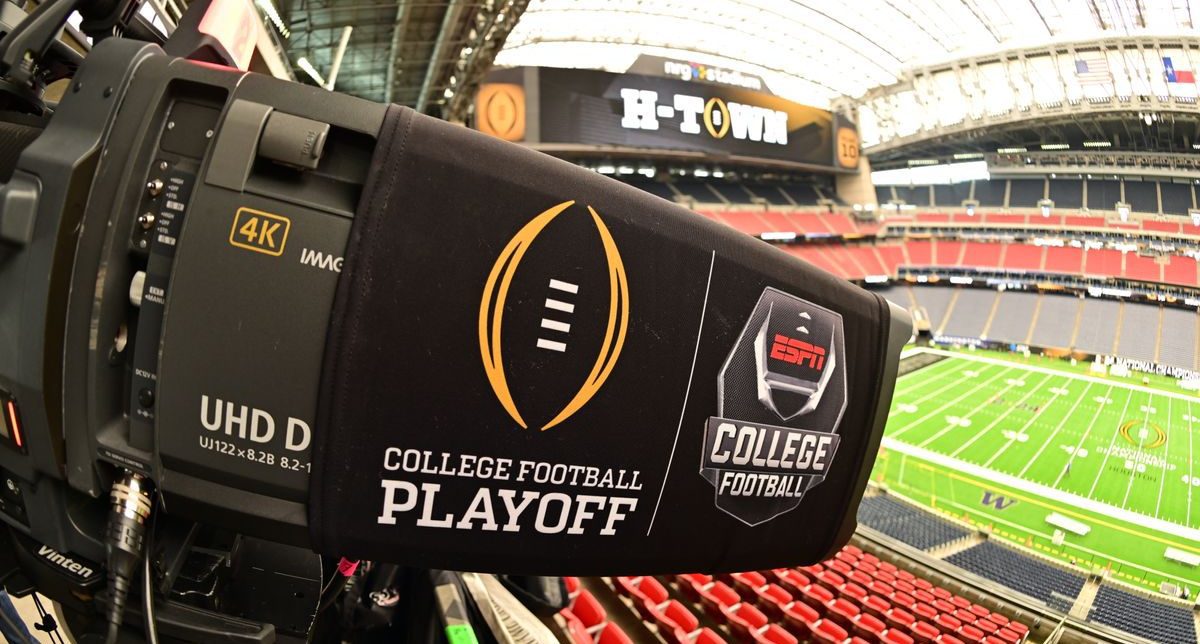
Significant shifts to the College Football Playoff structure may be on the horizon.
As reported by Ross Dellenger of Yahoo Sports, the Southeastern Conference (SEC) and Big Ten are leading discussions aimed at expanding the Playoff from 12 teams to either 14 or 16. This overhaul could introduce up to four automatic qualification slots for these two conferences and dramatically alter the landscape of both the regular season and the conference championship schedules.
One of the potential playoff formats under consideration involves granting the SEC and Big Ten each four automatic berths in the playoff. The Atlantic Coast Conference (ACC) and Big 12 would receive two automatic slots apiece, while the highest-ranked Group of 5 team would get one, as would Notre Dame if they finish ranked within the top 14. The remaining positions would be filled based on at-large selections made by the playoff committee.
The primary objective, as is the case in modern college football, is to maximize television revenue from broadcasting agreements, particularly with ESPN, which holds the rights to college football’s postseason through 2031.
Influencing this potential new format, the SEC and Big Ten hold a significant amount of authority due to a “memorandum of understanding” created last spring. This agreement allows these dominant conferences nearly autonomous control over the CFP’s new structure, provided that the interests of “lesser conferences” like the Big 12, ACC, and Group of 5 are still considered. The memorandum emerged as both the SEC and Big Ten expressed readiness to separate from the current playoff framework and establish an independent postseason if necessary.
Should this new format be adopted, the distribution of CFP television revenues would heavily favor the SEC and Big Ten, potentially tripling their current shares. At present, power conferences evenly share 80% of the revenue, while the Group of 5 conferences receive a smaller portion of the remainder.
According to Dellenger’s report, these changes might also allow the SEC to implement nine regular season conference games, which would subsequently impact the overall scheduling dynamics.
Specifically, adding a ninth conference game could lead to an agreed scheduling arrangement with the Big Ten, where teams from both conferences would face each other annually, akin to cross-conference matchups seen in college basketball. These games could be marketed as a distinct television package, generating additional revenue for both conferences as institutions seek ways to support player payments in the evolving landscape of college football.
An expanded playoff system would also significantly influence the format of conference championship weekend. The report suggests that conferences may turn to a “play-in” model, where, for example, the SEC or Big Ten could match their third-seeded team against the sixth seed and the fourth against the fifth, determining automatic playoff bids. Similar adjustments are under consideration for the ACC and Big 12. This added match inventory could translate into increased revenue opportunities.
However, it is unlikely that these proposed changes will be implemented before 2025, which marks the end of the current deal with ESPN. Leadership from conferences outside of the SEC and Big Ten remain cautious about any alterations to the format, and this year represents the last opportunity for those concerns to be influential, as the memorandum will only take effect with the new television agreement scheduled to commence in 2026.
Another important factor to consider with the new format is the scheduling. An expansion to 14 or 16 teams could result in even more competition for television slots with the NFL during mid-December. This competition has historically posed challenges for college football viewership, as seen this year, and there are practical solutions to avoid scheduling conflicts within the existing 12-team format.
The CFP Management Committee is set to convene in Dallas next week, where the SEC and Big Ten are expected to present one or more proposals for the upcoming playoff structure.










